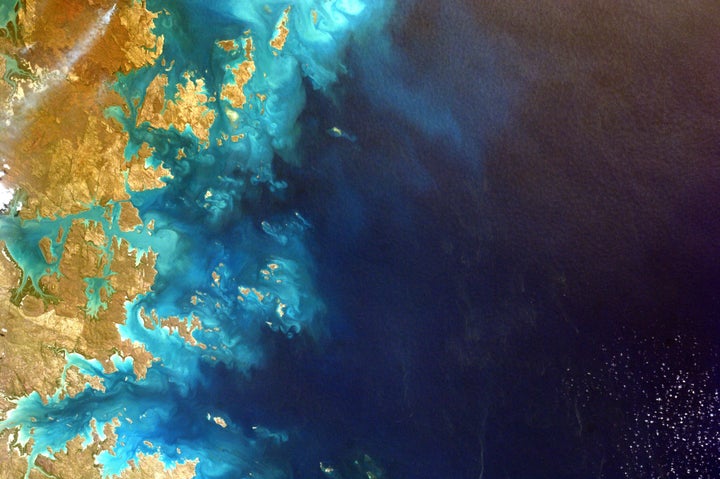
“Who controls the past controls the future. Who controls the present controls the past.” — George Orwell, “1984”
George Orwell’s novel “1984” was published 68 years ago, 35 years before the book’s titular year. Yet, since Donald Trump was elected president, the book has been flying off the shelves like it is a new release. The book’s resurgence in popularity is possibly due to its reinvigorated relevance. Orwell’s Oceania, for some, eerily resembles Trump’s America.
Winston Smith, the main character of Orwell’s novel, lives in the fictional dystopia of Oceania during the year 1984. Big Brother, the omniscient totalitarian ruler, sees, hears and controls all action and thought of Oceania’s citizens. Disagreement with Big Brother, or the party he leads, is explicitly forbidden. Even dissenting thoughts are punishable. Government propaganda is the only form of mass communication. By controlling all media, language and historical records, Big Brother is able to determine the past, present, and future of his country.
The story may be fictional, but for many readers, it is relatable.
“Though the comparison between Orwell’s Oceania and Trump’s America maybe be extreme, the actual impact we’ve had on our planet is almost unbelievable.”
Even if the people of Oceania emerged unscathed from Big Brother’s reign, Oceania’s intense industrialization most likely would have had terrible and irreversible effects on the environment. We cannot accurately compare our reality to the fictional Earth of “1984”, but we can compare our planet now to our planet in the real 1984.
Though the comparison between Orwell’s Oceania and Trump’s America may be extreme, the actual impact we’ve had on our planet is almost unbelievable. These are not facts invented by Orwell, nor histories rewritten by Big Brother. This is the scientific story of our planet, and what we have done to it in only a few decades.
1. According to the U.S. Census Bureau, while Orwell was in London in the late 1940s creating the world of Oceania, the world’s population was 2.5 billion people. By 1984, the population had almost doubled to 4.77 billion. Now, only 33 years later, there are 7.4 billion of us humans on the planet.
2. If Winston Smith had lived in the real 1984, he would have lived in a time with CO2 levels of up to 345.52 parts per million. In the present day, we are up to somewhere around 406 parts per million. Remember: 450 parts per million has been labeled as “the point of no return” for climate change.
3. One reason our atmospheric levels are increasing so rapidly is because we are emitting more CO2 than before. The World Bank’s data records show that in 1984, CO2 emissions were approximately 19 million kilotons. In 2013, the most recent year for available data, we were somewhere around 36 million kilotons.
4. But what about the hole in the ozone layer? Yes, there is also a dramatic difference there. In 1984, NASA measured the ozone hole area to be 10.1 million square kilometers. NASA’s 2016 measurements put that hole at 20.9 million square kilometers.
5. Also according to NASA’s measurement, sea levels have risen — a lot. More than 80 millimeters since 1993.
6. Not only do the seas look different, but so do the trees. The World Bank’s data show that we’ve lost almost 1.3 million square kilometers of global forest area between 1990 and 2015.
7. Here’s a fact about temperatures that I’ll quote directly from NOAA as to not misspeak or Newspeak, “July 2016 was the 379th consecutive month with temperatures at least nominally above the 20th-century average. The last month with temperatures below the 20th-century average was December 1984 (-0.09 degrees Celsius /-0.16 degrees Fahrenheit).”
8. Let’s not ignore the ice. In September 1984, NASA recorded that arctic sea ice covered 7.10 million square kilometers. By September 2016, that area had shrunk to 4.72 million square kilometers.
9. And why does ice melt? You guessed it: warmer temperatures. NASA has mapped the changes in global surface temperatures compared to the average global temperatures from the years 1951 to 1980. In 1949, the global surface temperature was 0.09 degrees Celsius lower than the 1951 to 1980 average. By 1984, the Earth measured in at 0.16 degrees Celsius warmer than the average temperature (a 0.25 degrees Celsius change from 1949). The most recent annual average from 2015 shows that we are now 0.87 degrees Celsius above the 1951-1980 average. (Initially, that may not see like a lot. But think about how your body feels when your temperature increases even by 1 degree.)
Present-day American citizens may feel an unsettling connection to Orwell’s dystopian 1984. But the real 1984, it turns out, was a much more utopian time for our planet.
